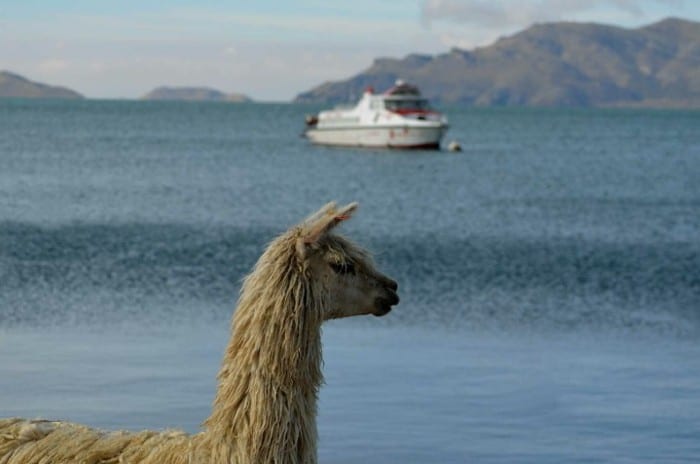
From hydrofoils, to catamarans, from boats to busses, the possibilities are extensive. Having personally inspected each option, we have compiled a summary of the pros and cons for four alternatives. Our summary below!
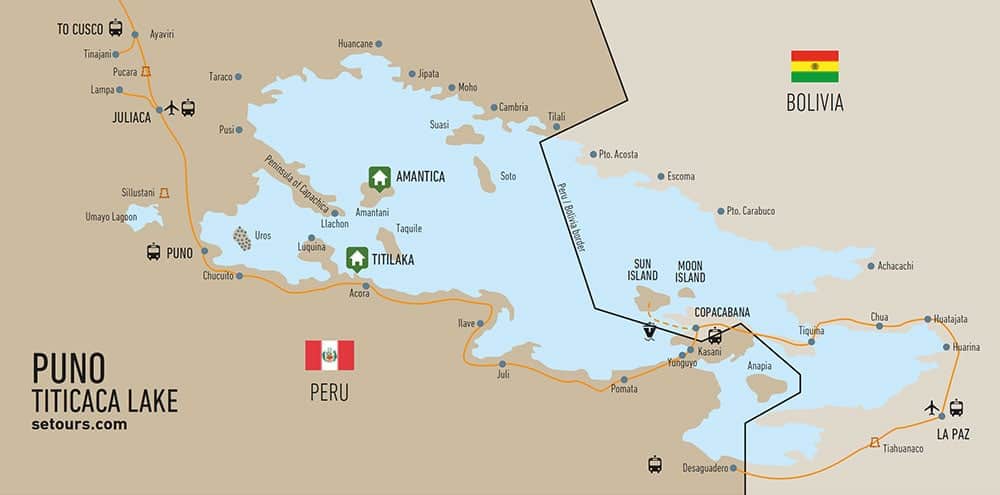
The main difference between the three options above is how they reach the Sun Island from Copacabana, either by hydrofoil, catamaran or boat.
To give you an idea of the pricing, these are the current approximate prices for each excursion:
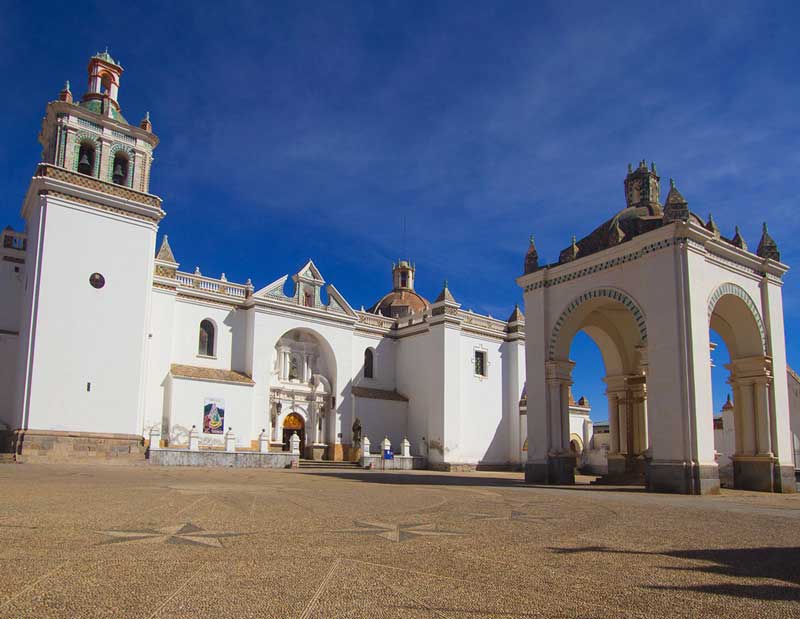
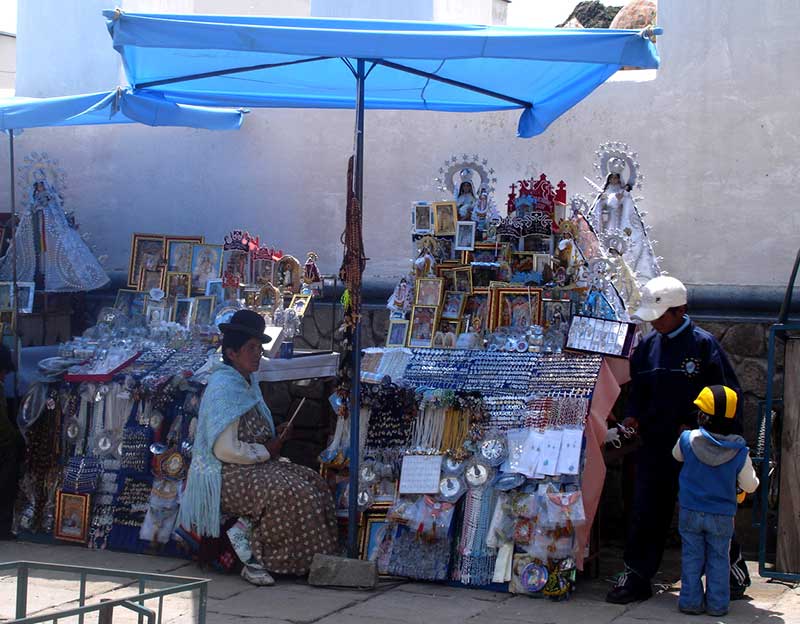
According to the Bolivian legend, it was on Sun Island where the Inca couple Manco Capac and Mama Ocllo emerged from the lake to establish the Empire of the Sun. Regardless of which of the three options above you pick, you'll see the Inca steps and the sacred fountain on the island. Keep in mind though, that these might not really be overwhelming after visiting the major archaeological sites in Peru.
What is really impressive here is the feeling the endless blue of the lake and the sky along with the imposing snow-capped Royal Mountain Range evoke. There are no vehicles on Sun Island. What you rather experience here is authentic rural life, a connection to nature, and mindful moments.
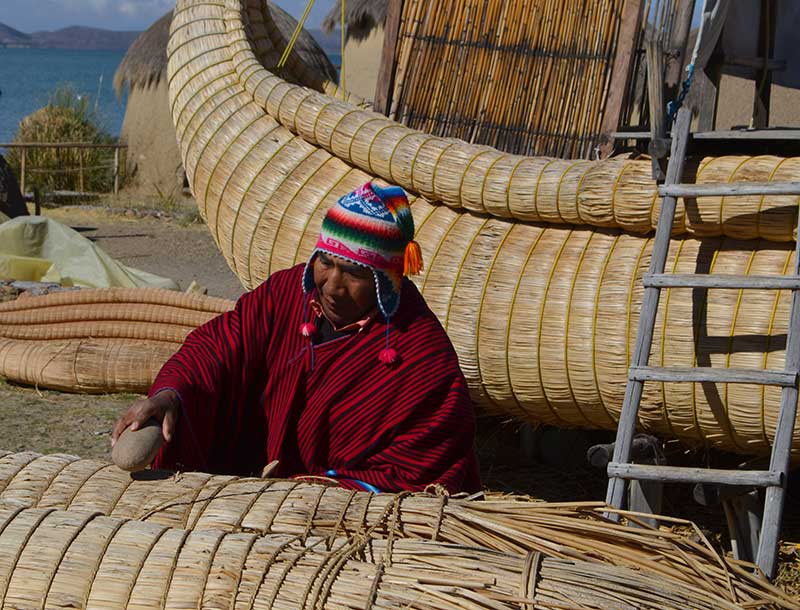
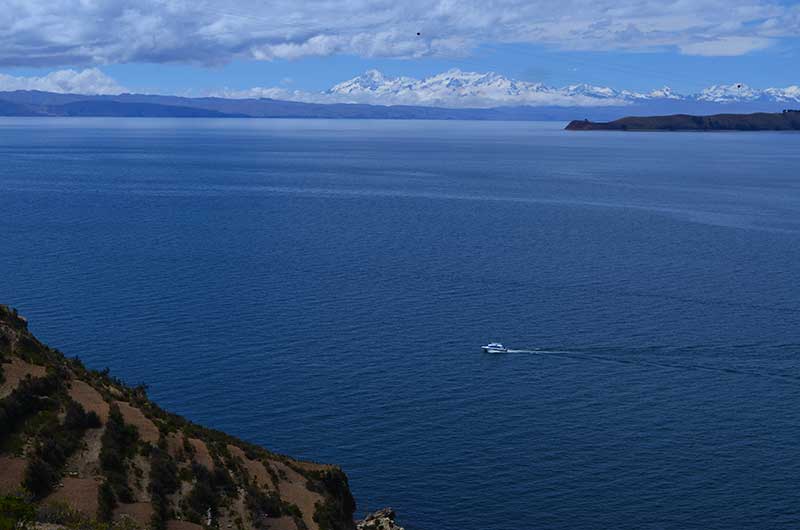
Travelers booking a catamaran day trip get access to the Inti Wata Cultural Complex. Rather than a building, the complex is an outdoor area where you can find the different crops and medicinal herbs grown on the island.
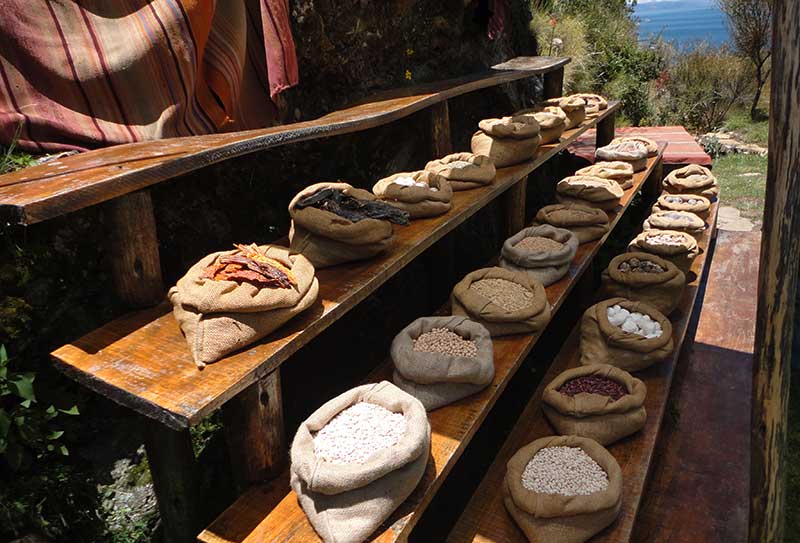
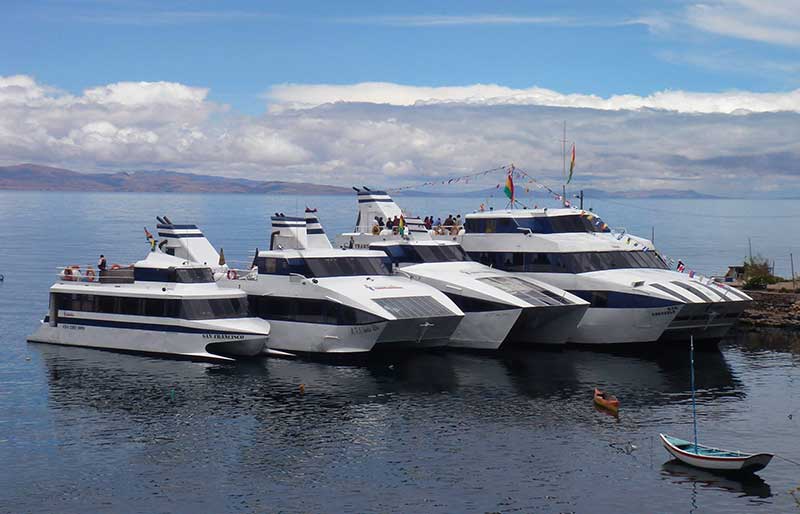
The underground Ekako Museum, although tiny, boasts some archaeological artifacts unearthed on the island and a colorful collection of elaborate costumes you would normally only see at the Oruro Carnival (one of the largest in the world).

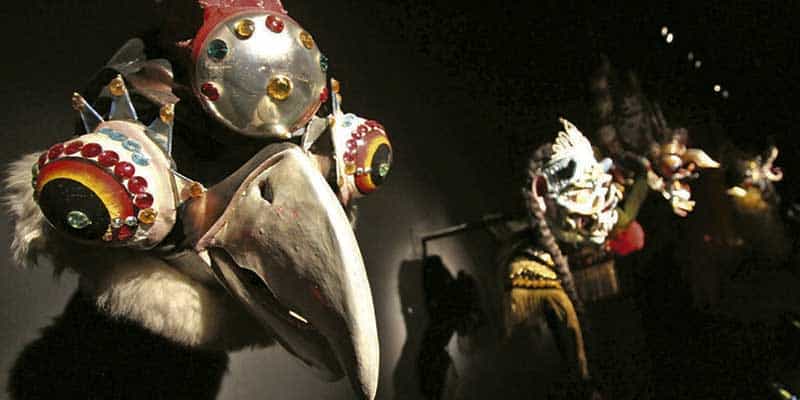
You will have the option to attend an outdoor 'Kallawaya' session and to understand the relevance and evolution of ancestral medical techniques dating back to pre-Inca times. Kallawayas are healers treating patients using traditional medicinal knowledge and local herbs. This knowledge, transmitted only within practitioner families and between males, has been recognized by UNESCO as part of Bolivia's intangible cultural heritage.
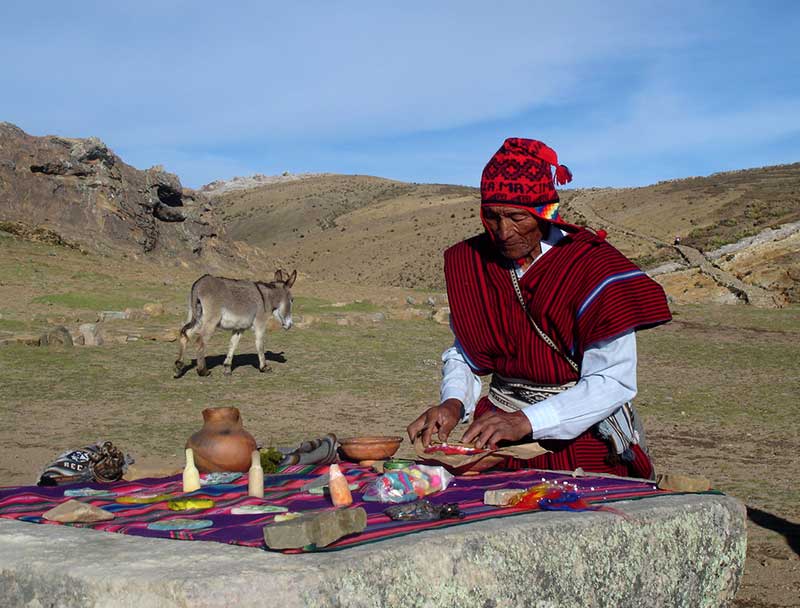
If you are a big fan of Andean camelids such as llamas or alpacas keep your camera ready when visiting the Inti Wata Center (we took the hero picture featuring a llama, there ;-)).
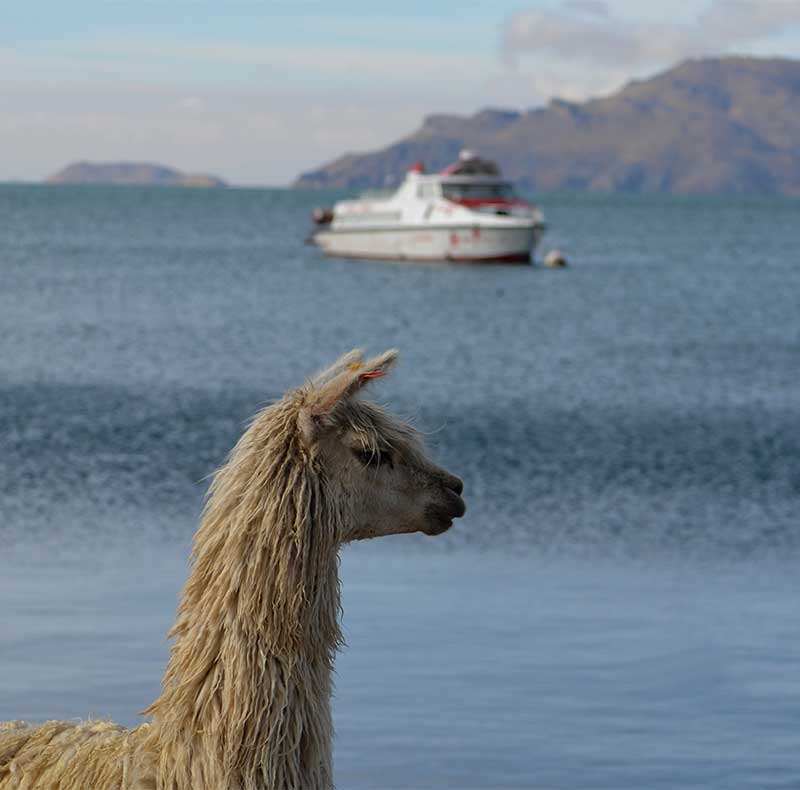
The absolute highlight for us was the unique sailing experience aboard a huge traditional reed vessel for panoramic views of the Pilcocaina archaeological site.
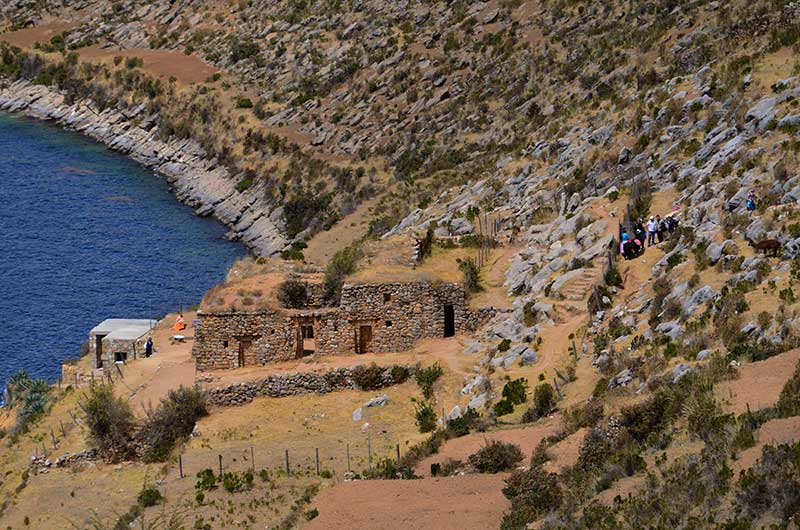
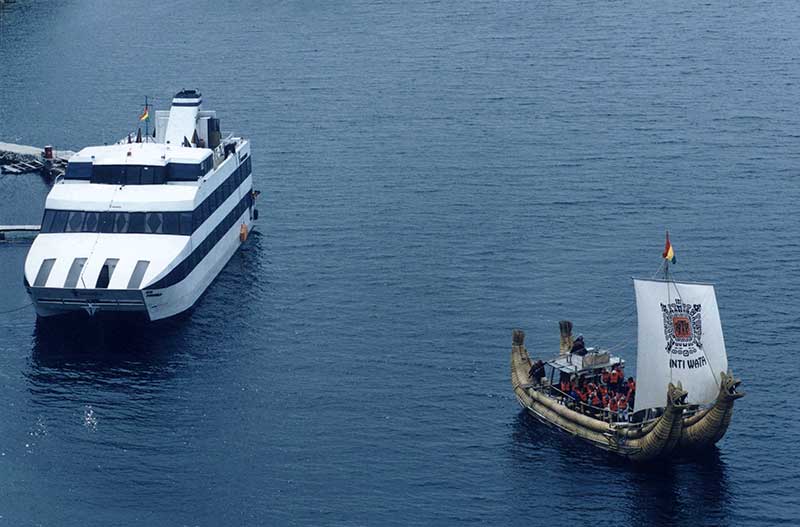
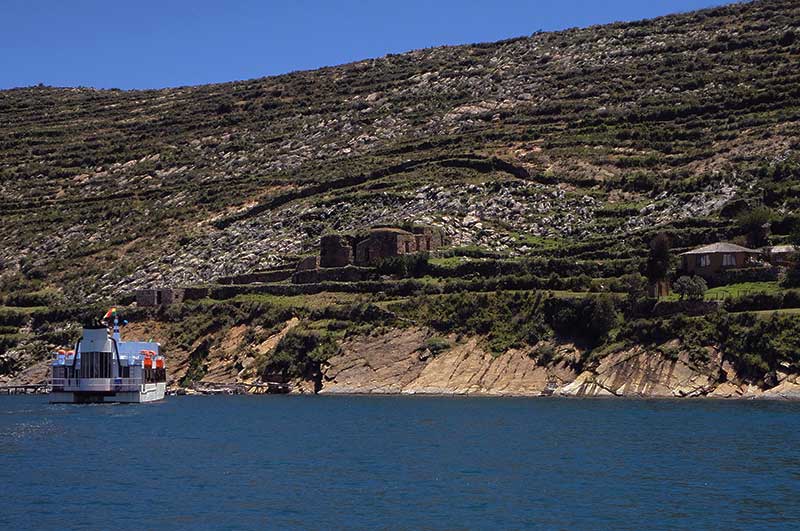
This is the only option that includes a visit to the tiny Moon Island (in addition to the visit to Sun Island). Moon Island boasts the 'Inak Uyu' virgin's temple - considered one of the lake’s most important archaeological sites.
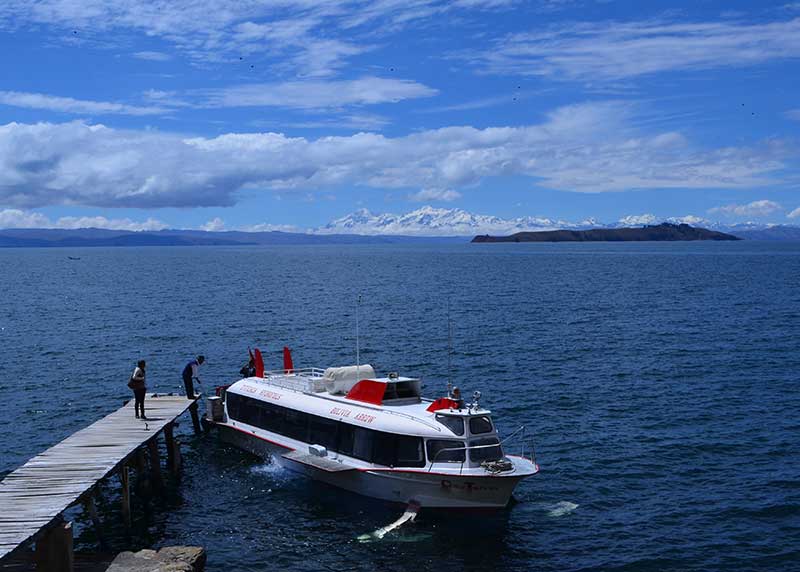
A delicious lunch is served at the small and cozy Uma Kollu restaurant on Sun Island. The dining room indoors features an authentic Inca terrace, but most travelers prefer dining al fresco to enjoy the splendid lake views.
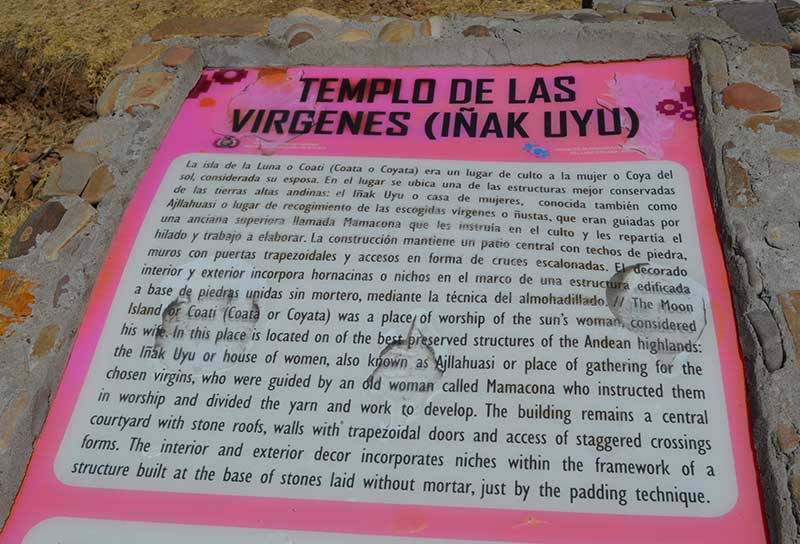
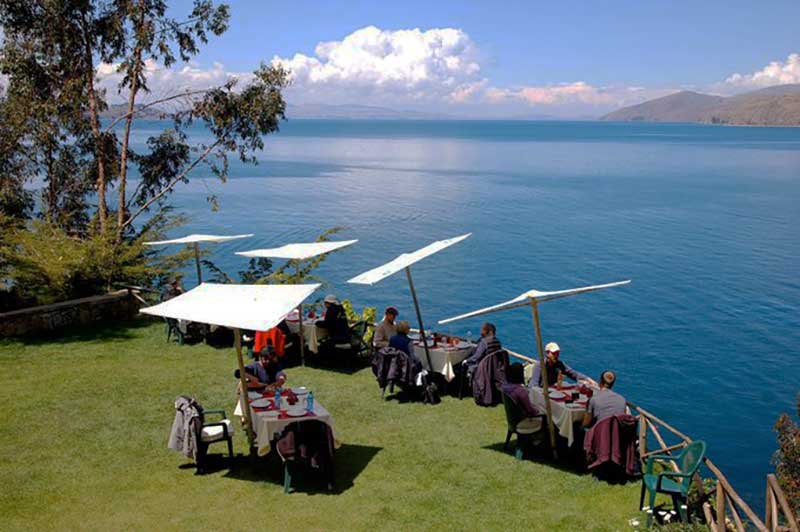
After the visit to both islands, a stop is made at Huatajata to explore the 'Andean Roots' cultural village. The biggest highlight of this visit is to meet the Limachi brothers, the builders of the 'Ra II' and the 'Tigris' reed boats for Thor Heyerdahl’s famous expeditions.
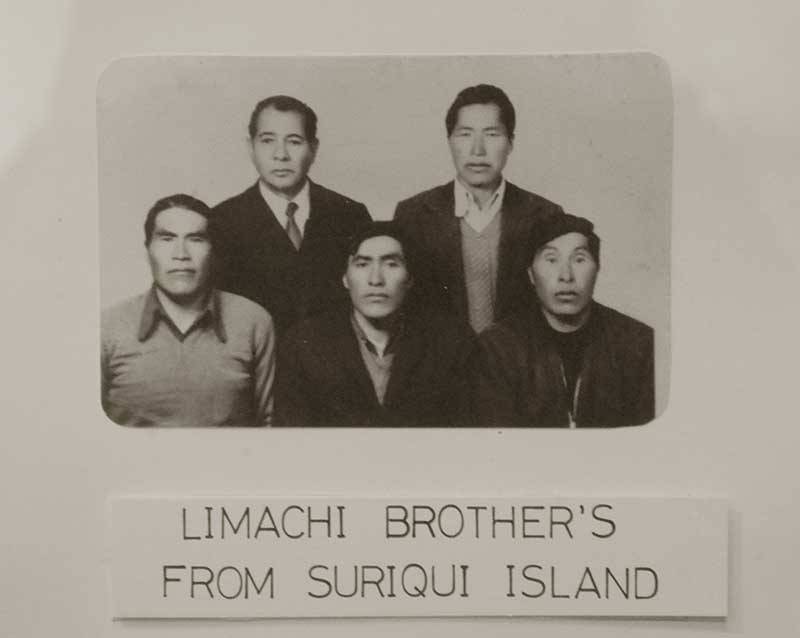
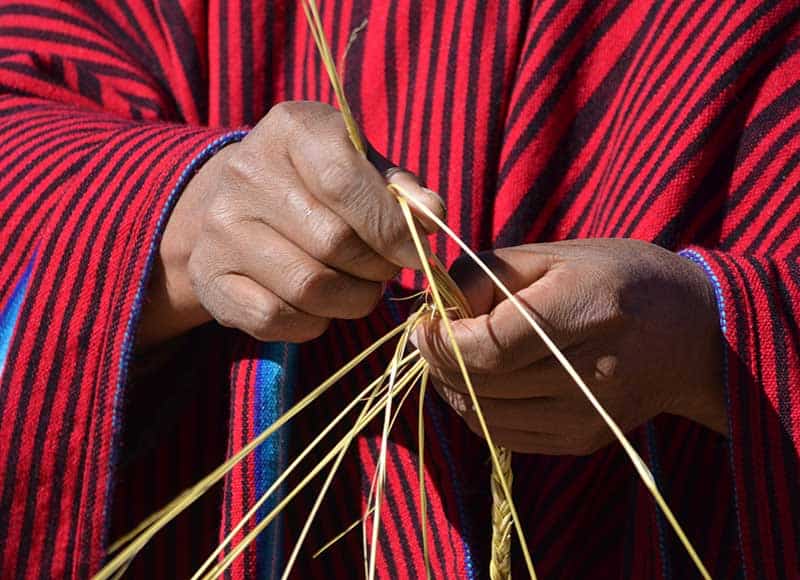
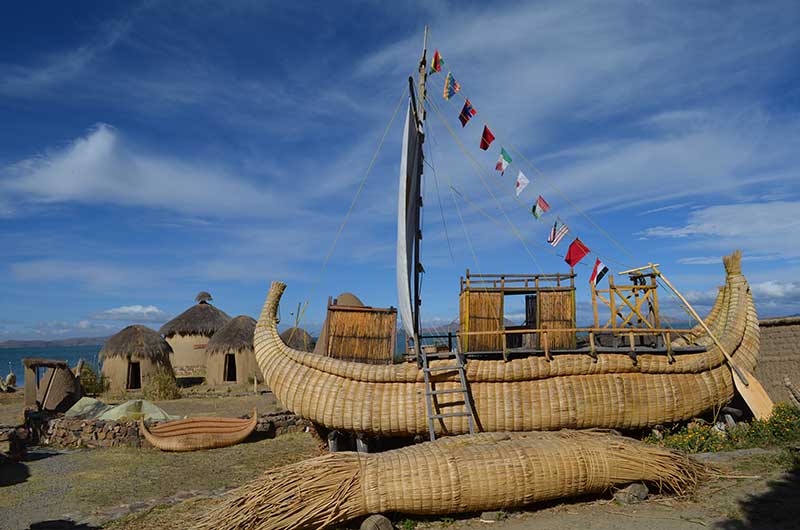
With this option, you board a regular motor boat to Sun Island upon arriving in Copacabana. There are two possibilities for lunch, depending on the availability of the restaurant in Copacabana and/or your preference. Either you enjoy lunch at the seaside Rosario hotel in Copacabana or you will have lunch on Sun Island.
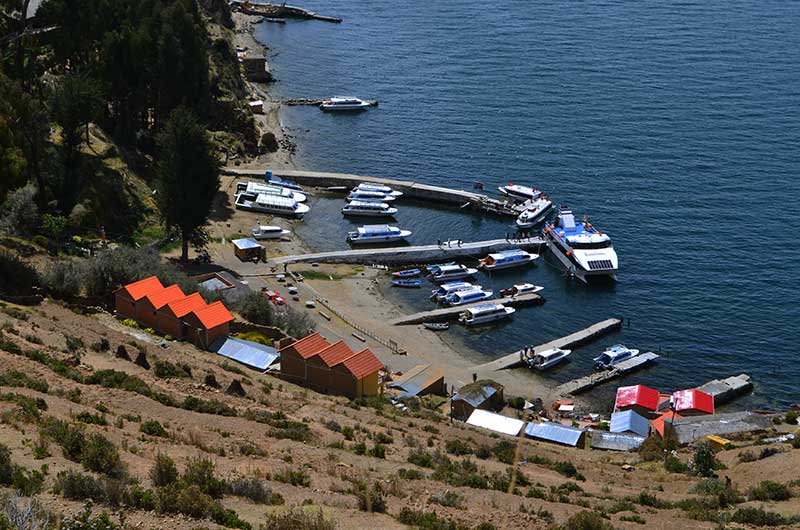
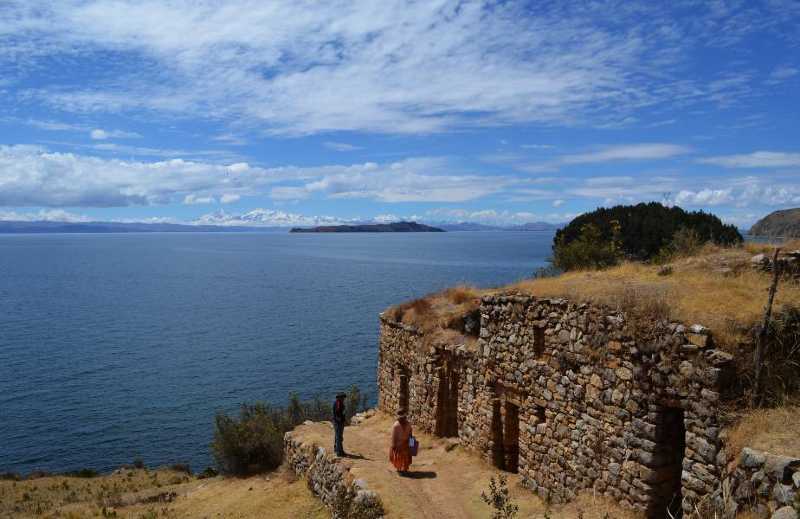
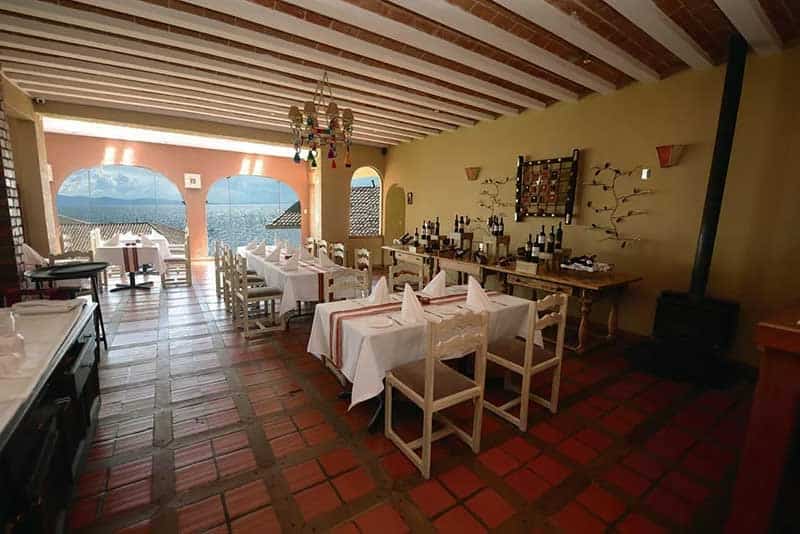
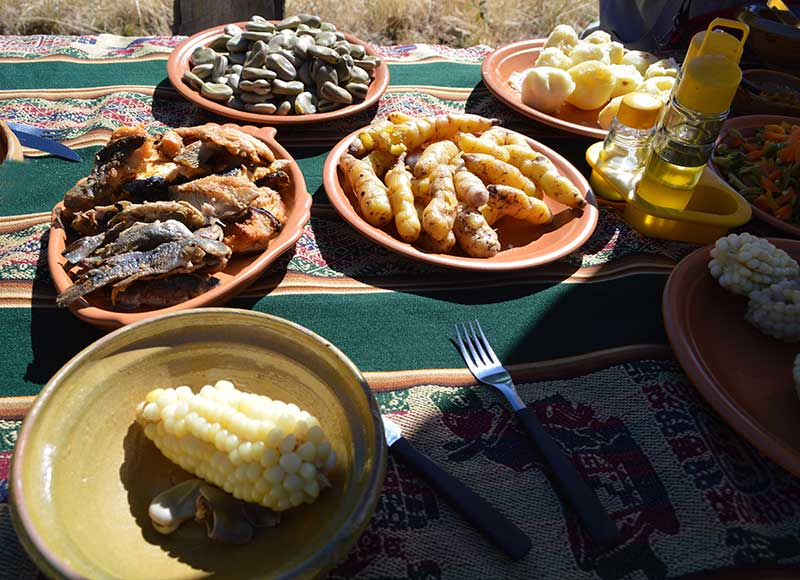
Lunch on Sun Island is served in 'apthapi' style, a traditional Andean lunch, where different families of the island bring different types of meals, and everyone can taste different flavours. On Sun Island you will visit the Pilcocaina Temple, the best-preserved Inca archaeological site on the island.
The final and most affordable way you can get from Puno to La Paz is by bus. Tickets cost around 20-25 USD. It takes around 7-8 hours, and will therefore not save you much more time than taking a full day tour. Most importantly though, you won't have an opportunity to stretch your legs and you wont have the chance to enjoy the can’t-miss lake views.
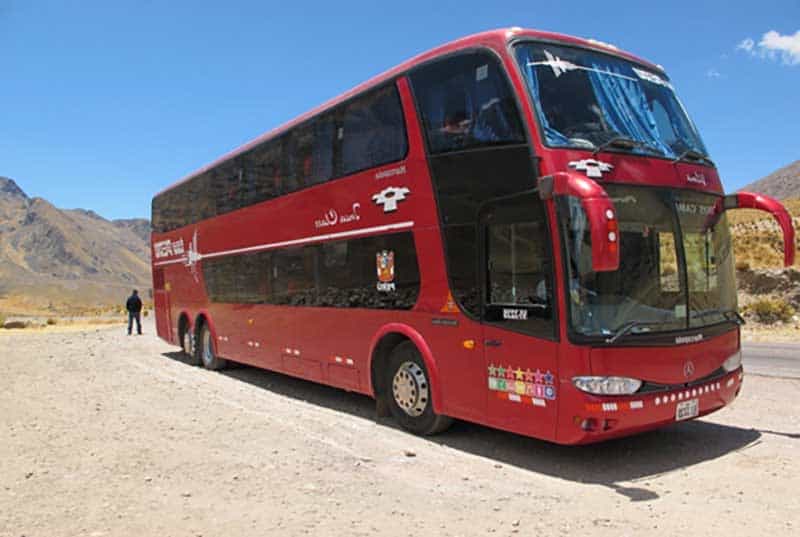
Whether you take one of the excursions crossing Lake Titicaca above or the bus, you will need to change vehicles at the border between Peru and Bolivia. During the border crossing at Kasani, you need to present your passport before boarding the next bus.
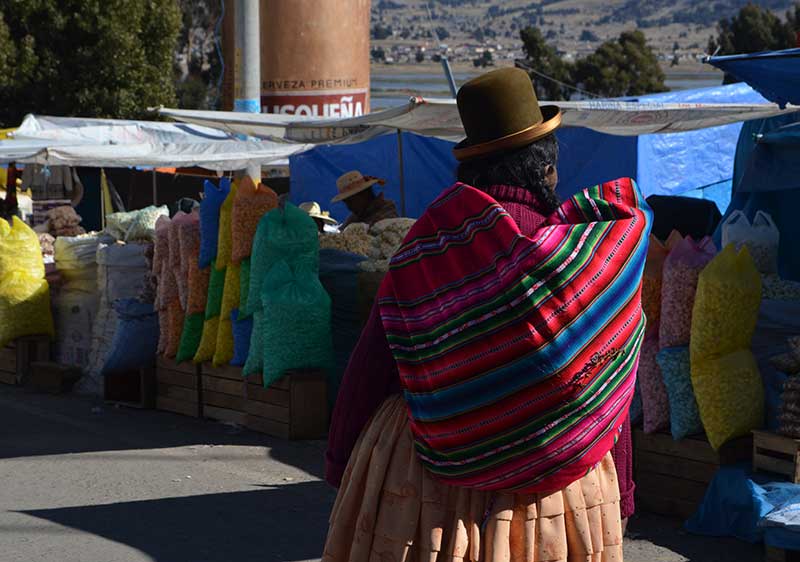
Make sure your passport is valid for at least 6 more months upon entry in Bolivia. You will also need to fill out a TAM immigration card which you receive at the border. Depending on your home country, you might need a visa, so make sure to check with your local embassy before arrival.
We recommend spending one or two days at high altitude before crossing Lake Titicaca and visiting Sun Island. There are only footpaths on Sun Island, therefore visitors should possess a reasonable degree of fitness is for exploring the island. The excursions mentioned above are not recommendable for the less mobile, as there are no motorized vehicles permitted on the island, and a decent amount of walking is required. The sun rays are extra strong at high altitude, so don't forget to pack sunscreen, sunglasses, and a hat!
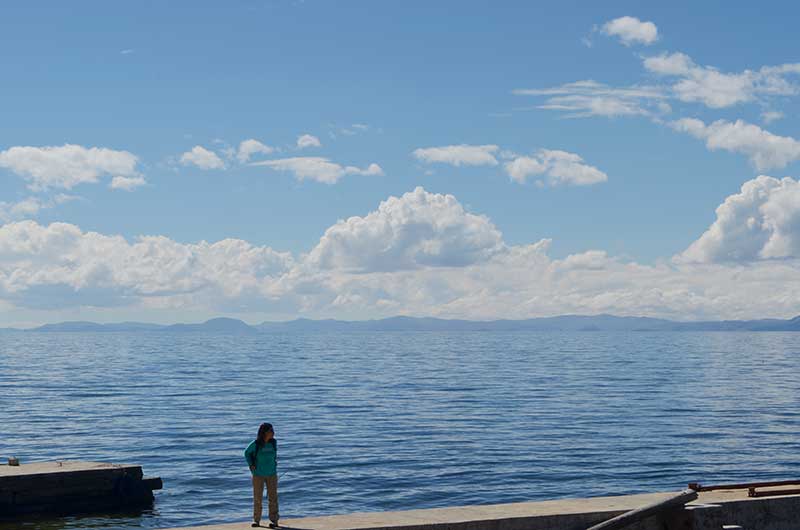
Are you considering to spend some time in Puno before crossing Lake Titicaca to La Paz? Check out our article Are Lake Titicaca & Puno Worth Visiting? for everything you need to know!
Wondering how to get to Puno? Aside from flying or taking the bus, you could take the Titicaca train which is a full day journey, or the Belmond Andean Explorer train with one overnight on board.